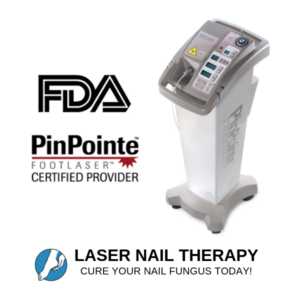Both toenail fungus and Psoriasis are infectious diseases that affect a large population of individuals. Although neither is deadly, they can be unsightly, uncomfortable, and painful. They both spread to other parts of the body if left untreated. They are also both retractable through mere contact if left untreated. Moreover, the two diseases have similar characteristics in appearance and very similar symptoms. This blog will help you differentiate between the two diseases.
Thickening of the nail, pitting, and deformation are characteristics of both Psoriasis and a nail fungus. Although darkening of the nail is a symptom of a nail fungus. Yellowing or browning of the nail is a symptom of psoriasis. Detachment of the toenail from the nail bed is a common characteristic of both diseases. Distortion of the nail, however, is only classified in fungal nails. If chalky buildup should occur underneath the nail, causing it to lift, then this would be identified as a psoriasis symptom. On the other hand, if the nails become brittle and dull, then this would be classified as a fungal nail. Lastly, pain or tenderness of the nails can be due to psoriasis, while a foul odor emitting from the feet is tied to nail fungus and athlete’s foot.
Although there are many similarities between psoriasis and nail fungus, it can be easier to identify when comparing the differences. If you are still unsure and are feeling discomfort in any way, you should definitely seek out professional help for clarification of your case and treatment options.
Toenail Fungus or Psoriasis
Have you noticed a spot or spots on your nails lately? If so, have you tried antifungal treatments with the presumption that it is a fungal nail and not getting results? If so, we may have the answer you had no idea about – Psoriasis. Fungal nails are often confused with Psoriasis and vice versa. There are, however, a few ways to tell the difference between the two. Before you seek proper treatment, you need to find out if you have toenail fungus or Psoriasis. Most treatments will not resolve both problems.
Psoriasis is a skin condition that causes red and scaly patches to occur on the skin. About half the individuals who have it will also have it occurring on their nails. The nails will typically appear to be thick, discolored, loose, and crumbly. This easily describes nail fungus as well, but it is important to note that if you have this issue on your skin, it is very likely to occur on your nails as well, and not a nail fungus. Furthermore, if it is psoriasis, the nail color will appear green, yellow, or brown. They may also develop red or white spots.
Nail fungus, on the other hand, carries many of the same characteristics of psoriasis: thickening of the nail, lifting, brittleness, crumbly, discoloration, and spots. However, the difference in nail color and spotting is usually how you can determine the difference. Moreover, a fungal nail is more likely to become yellow or crumbly white.
If you are concerned about the health of your nail and are exhibiting the above symptoms, it is best to contact a doctor or specialist regarding the issue and treat the nails accordingly.
Why are nail fungus and psoriasis similar?
The main reason why most people tend to confuse the two is that both conditions turn the nail white. This leads to similar characteristics. This can cause people to rush to a conclusion or certain treatments, resulting in failed results. You will be able to tell the two apart when the patient. Since both come with clear distinctions and differences.
Nail fungus causes the nail to look damaged, along with having the appearance of scaling. Although psoriasis can make the nail look damaged as well, it is usually paired with pitting and indentations. Both conditions can be found in both the fingernails and toenails. Nail fungus is more commonly found on the toenails. Since the fungus thrives in warm, damp, dark environments.

Nail Psoriasis
Psoriasis is an autoimmune disease that results in scaly red patches on the skin. This condition causes the body to overproduce skin cells. In most cases, symptoms can be seen on the skin. But, there is also a chance that they show up on the nails. It is more common in fingernails than in toenails. Treatments include vitamin D ointment, topical steroids, or light therapy
Symptoms include:
- Pitting of the nails
- Thickening or deformation
- Yellowing or browning of nails
- Nail-plate detaching from the nail bed
- Chalky buildup under the nail
- Tenderness or pain
Nail Fungus
Nail fungus, also known as Onychomycosis, is an infection caused by a type of fungi called dermatophytes. It is related to fungal infections of the skin, such as jock itch, athlete’s foot, and ringworm. Fungal nail infection is one of the most common nail conditions. It starts as a white or yellow spot on the nail that can easily be ignored. Once it progresses, it can be very difficult to get rid of.
Symptoms include:
- Thickening of the nails
- Darkening nail color
- Continuous deformation of the nails
- Brittleness
- Foul odor
Nail psoriasis vs nail fungus is a common misconception. Nail fungus treatment can be very difficult because the fungus can get under and within the layers of the skin. Fungus thrives in dark, damp, and moist environments.
Treatment for Psoriasis
Psoriasis doesn’t always respond well to common treatments. The visible response may take weeks or months due to the slow growth of the nail plate, and relapses are common. Most common treatments will include topical steroids and systemic treatments such as different medications. And sometimes, doctors might recommend nonpharmacological treatments such as phototherapy. It is extremely important to have the right diagnosis and treatment. Our doctors always recommend seeking a professional diagnosis before determining the best treatment for yourself.
Is there a psoriasis treatment?
Psoriasis of the nail doesn’t currently have a set cure that will eliminate the problem forever; the current treatments out right now are to improve the overall look of the nail as well as the function of the nail. These include, but are not limited to, steroid injections, which are injected straight into the nail bed, accompanied by creams and ointments applied directly to the skin and nail. The ointments themselves contain vitamins A and D, which contribute to improving the overall health and appearance of the nails.
How to treat nail fungus
Nail fungus can be treated with several different medications and options. Pills that are taken orally are the most common but have nasty side effects, which require constant blood work and can cause serious liver damage. There are also laser treatments for nail fungus, but these treatments aren’t covered by insurance and can be quite costly. Lasers also have mixed reviews depending on the type of laser. Most patients think they will be cured from nail fungal infections for life and don’t even consider reinfection, which can lead to disappointing results since reinfection can be inherent.
The most cost-effective treatment for nail fungus is a mixture of topical ointments and creams, but sadly, these have the lowest cure rates at only 5% – 15%. The reason for this is that the fungus is living sandwiched between the skin of the toe and the nail. Topicals and ointments go around and over the nail, which makes it difficult to penetrate deep down to the root of the problem. Soaks are the best but very time-consuming and must be done regularly to see any results.
Laser Treatment for Nail Fungus
If you have caught nail fungus as well, it can be easily treated using the FDA-approved PinPointe laser, which typically only takes one treatment.
Our toenail doctor in Tampa, FL, recommends this treatment. The PinPointe Laser treatment has the highest cure rate in the market. It has no side effects and no recovery period. As a result, you can go about your daily activities right after the treatment. Also, it is not painful.
If you have any signs of nail fungus, call us at (800) 672-0625 or visit our website for more information on our doctors at one of our over 150 locations.





